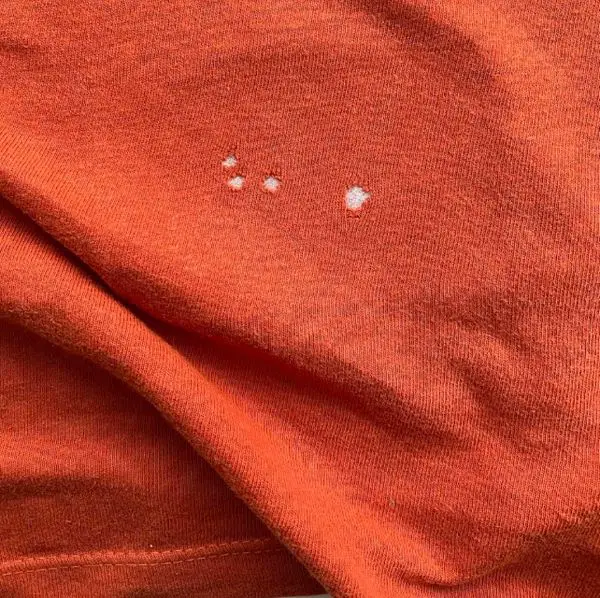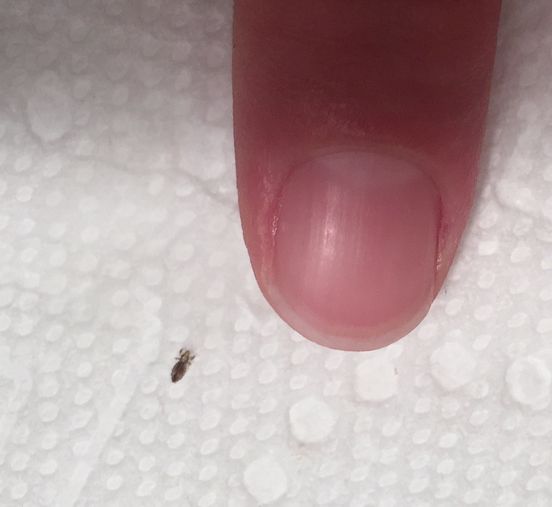
Finding small holes in your favorite clothing can be frustrating, especially when you can’t pinpoint the cause. These tiny tears might appear in t-shirts, sweaters, or even dresses, and while you may assume they’re caused by moths, that’s not always the case.

Common Causes of Holes in Clothing
Most of us encounter holes in our clothes due to wear and tear. While moths are infamous for ruining fabrics, they are not the only culprits. In many cases, the damage happens because of everyday activities and washing habits. Let’s explore the main factors responsible for these pesky holes.

- Friction from Accessories: Items like belt buckles, zippers, and bras can rub against the fabric, creating weak points. For example, if you often notice holes around the midriff area of your shirts, your belt buckle might be the problem. By adjusting your belt or smoothing rough edges with sandpaper, you can prevent further damage.
- Snagging on Rough Surfaces: You may not realize it, but surfaces like brick, stone, or even wooden furniture can snag your clothes. Something as small as a protruding nail can quickly turn into a garment disaster. Make sure to be mindful when brushing up against rough surfaces or leaning on walls.
- Washing Machine Overload: One surprising cause of clothing holes is overloading the washing machine. When too many clothes are packed into one load, they rub against each other more aggressively, increasing the chance of damage. Turning clothes inside out, especially those with buttons, beads, or other decorations, can also help reduce wear.
- Chemical Damage: While bleach can be helpful for whitening clothes, overusing chlorine bleach can weaken fabric and cause holes to appear over time. If you use bleach, be sure to follow the correct dilution guidelines, or switch to oxygen-based alternatives.
- Fabric Quality: Unfortunately, some fabrics are just more prone to tearing. Low-quality materials, especially thin cotton, tend to develop holes faster than thicker or more durable fabrics. While it’s tempting to buy cheaper items, investing in higher-quality pieces might save you the trouble of constantly replacing damaged garments.
Additional Factors to Consider
Beyond these common causes, other factors can contribute to mysterious holes in your clothes. Environmental conditions, for example, play a role. In areas where the air is humid, fabrics may weaken faster due to moisture retention, making them more susceptible to tears.
- Clothing Moths: Though not always the main suspect, clothing moths can indeed be a problem. These insects are drawn to natural fibers like wool, silk, and cashmere. They particularly love dark, undisturbed spaces like closets. To prevent moth damage, consider using moth repellents like cedar or lavender. Additionally, keeping your wardrobe clean and regularly airing out garments can discourage moths from making your clothes their next meal.
Preventive Measures
Knowing the causes of these small but irritating holes is half the battle. The next step is prevention. Here are some practical ways to stop holes from ruining your clothes:
- Avoid Overloading Your Washer: By washing smaller loads and turning delicate items inside out, you minimize the risk of friction-induced holes. Investing in a laundry bag for delicates is also a great idea.
- Reduce Chemical Use: As mentioned earlier, overuse of bleach and strong detergents can weaken fabric fibers. Stick to gentle detergents and use bleach sparingly. Alternatively, consider natural cleaning solutions like vinegar or baking soda to avoid harsh chemicals.
- Repair Before It’s Too Late: Small holes can grow into larger tears if left unattended. When you spot a hole, consider mending it immediately. Sewing a patch or stitching the hole closed can extend the life of your favorite clothing item.
- Store Clothes Properly: Whether you’re worried about moths or just want to preserve your clothing for longer, proper storage is key. Use airtight containers for seasonal items, and ensure your wardrobe is dry and well-ventilated.
Conclusion
Finding holes in your clothes doesn’t always mean your wardrobe is under attack by moths. Everyday wear and tear, washing habits, and environmental factors are often to blame. By being mindful of how you wear, wash, and store your clothes, you can extend their lifespan and avoid the annoyance of constantly discovering new holes.
Next time you notice a hole in your clothing, consider all the possible causes before blaming the nearest moth. With a few simple precautions, you can keep your favorite pieces intact and avoid unnecessary replacements.
If you’ve experienced these pesky holes, share your tips in the comments on how you’ve managed to keep your wardrobe safe!



